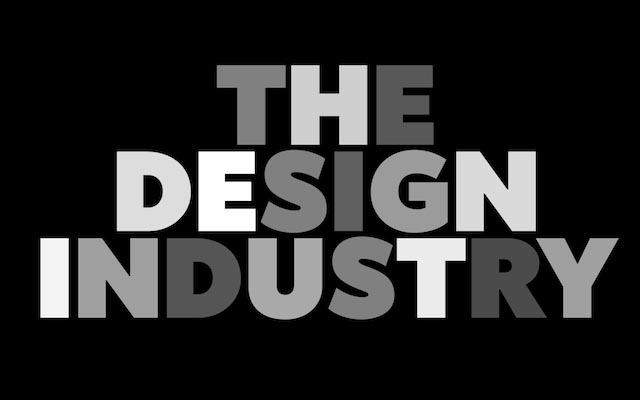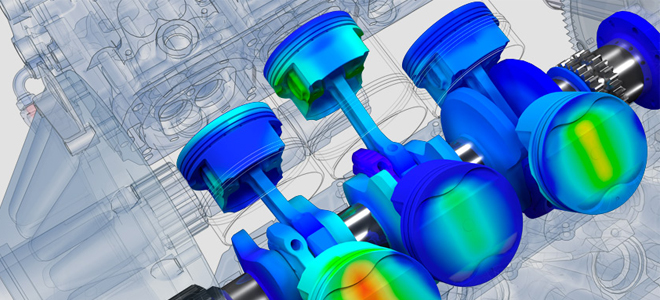Design industry in India is characterised by many small to medium sized “innovative” firms. Some design companies are really well-organized and have lots of job opportunities. These firms offer multiple specialties and serve more or less as one-stop-shop for design needs (marketing, arts, publication etc.). Indian government is taking initiatives to improve the state of design industry in India and opening doors for satisfying employment opportunities. Make in India is an effort to motivate investors and entrepreneurs to invest in the Indian economy, and CADD Centre is contributing to make this initiative successful.
The Essence of the Design Industry
Design industry in any economy holds an important aspect of creativity, innovation and growth. It provides processes and tools to translate ideas into practical business applications and thereby translating into huge monetary growth. It is an interdisciplinary, problem-solving discipline which combines creativity with skill and knowledge in areas of technology, business and communications.
Organizations hire professional designers to carry out tasks such as packaging and designing effective advertising campaigns, designing product, developing their unique identity etc. The design industry plays a crucial role in creating publications such as books, online resources, newspapers, blogs, magazines, and websites.
Global Expansion and Abundant Opportunities
A few Indian design companies are internationalizing their operations. They have been opening offices in other countries and tying up with design companies from other countries. Students who have completed their courses can find lots of job opportunities whether they want to start their career in fashion industry, animation, graphic design/web design, architecture or manufacturing there are various roles available within the design industry.
Foreign companies like Saffron Brand Consultants, Landor & Associates, Fitch, WD partners have already setup operations in India. These companies mainly represent the branding and communication domain. There is news of a few more coming to India from other design domains as well.
Some such tie-ups are:
1. Elephant Strategy + Design entered into an alliance with npk Industrial Design, Netherlands and Design Continuum, USA.
2. Vyas Gianetti Creative signed six partnerships with Flex / The Innovation Lab (Product Design); Lava Graphic Studios (Editorial Design); Indeed (Marketing Sales & Strategy); Wally Olins’ Saffron; DixonBaxi (Creative and Strategic consultancy); and Ryan + Deslauriers (Real Estate Branding).
3. Onio Design has partnered with Style Vision, France for Trend Research.
4. Brandscapes Worldwide Consultancy has tied up with Design Bridge, U.K based design consultancy firm.
Key Insights into the Design Landscape
1. In Taiwan, India, and China, people are familiar with public design institutions.
2. Italy, China and India are the main players in overseas design outsourcing.
3. China and India are thought to enjoy affordable pricing for design development.
4. In France, India and Sweden, consumers favour a design style that is reflective of their unique cultural characteristics.
5. Korean firms spent less money on design, along with Brazilian and Indian firms. Design-related investment is the lowest in India.
6. People in Britain and the U.S. spend the most on design, while in Korea, China, and India, the expenditure is lower, suggesting a lower awareness of design in those regions.
Indian Government Initiatives for Industry Improvement
The Indian government has taken crucial steps in collaboration with private associations to enhance the state of the design industry. One significant driver of transformation is the “Make in India” campaign.
“Make in India” is driving the transformation
Make in India is the Indian government’s flagship campaign planned to encourage the domestic manufacturing industry and attract outsiders to invest into the Indian economy. The Prime Minister invites all the members associated with the campaign, especially the corporates and the entrepreneurs, and realize their duties by first developing the nation and for investors to provide the country with foreign investments.
Mr. Narendra Modi pledged to focus on the overall development of the nation rather than pursuing a political agenda. He puts emphasis over the poverty improvement and employment creation that would certainly the key point to make the campaign successful. Make in India includes 25 sectors of the economy for skills enhancement and job creation.
The list includes: bio-technology, chemicals, tourism, aviation, IT, textiles, and hospitality, automobiles, pharmaceuticals, ports, leather, wellness, design manufacturing, mining, railways, renewable energy, and electronics. The initiative is expected to drive an increase in tax revenue and GDP growth.
The Indian Advantage
Indian technical forces have expertise that cannot be found anywhere else around the globe. Specifically, Indians do have a rare capacity for creating creative resolutions with limited resources when compared with the engineers in the West.
Nurturing Talent: CADD Centre’s Contribution
There are few institutions those works regularly on the students to improve their skills and give them a platform to get their dream job. CADD Centre is a leading one.
CADD Centre is Asia’s biggest network of CAD training centres, head quartered at Chennai, India and provides end to end solution to CAD users and also trained students in fields such as Computer Aided Engineering (CAE), Computer Aided Manufacturing (CAM) and Computer Aided Design (CAD).
Today, CADD Centre have more than 520 franchise outlets which are spread across 22 countries. CADD Centre has successfully trained more than 1 million graphic artists, engineers, and management professionals, many of whom are now working globally.
Shaping the Future
If the prime minister is giving his full support to the Design sector through the Make in India movement, career openings must be explored far beyond what was previously thought possible for Engineers. CADD Centre is playing its part to drive this transformation can prove to be counsellor and a trusted advisor in this direction.
In Conclusion
Design can renovate the way we do things, and result in new economic benefits and a better quality of life. With the proper strategies in design, can solve problems in ways that are functionally and aesthetically pleasing and make economic sense. Design helps to improve business efficiencies, offer world-class products and services, improve quality and differentiation, productivity and margins, increase revenues and achieve higher market share and accelerated growth.
This article presents the Indian Design Industry in its present form and future scope and also discusses how movements like “Make in India” transform the state of Design sector in India and generate new revenue opportunities.
Image courtesy: unitscale.com
FAQs (Frequently Asked Questions)
1. What is the “Make in India” campaign?
“Make in India” is a flagship campaign by the Indian government aimed at promoting domestic manufacturing and attracting foreign investments into India’s economy.
2. What are some key sectors covered by the “Make in India” initiative?
The “Make in India” initiative encompasses 25 sectors, including biotechnology, chemicals, tourism, aviation, IT, textiles, hospitality, automobiles, pharmaceuticals, and more.
3. How does the Indian design industry compare internationally?
India, along with Italy and China, is a major player in overseas design outsourcing. However, design-related investment is comparatively lower in India.
4. What role does CADD Centre play in shaping talent in the design industry?
CADD Centre is Asia’s largest network of CAD training centers, providing comprehensive training in fields like Computer Aided Engineering, Manufacturing, and Design. It has trained over a million professionals globally.
5. How can effective design benefit businesses?
Effective design can enhance business efficiencies, offer superior products and services, improve quality, increase productivity, boost revenues, and secure a higher market share, ultimately leading to accelerated growth.




